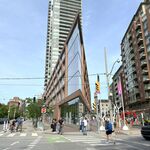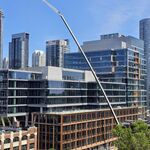kEiThZ
Superstar
I wouldn't bridge the BRT over Hwy 400, a cut-n-cover crossing below would suffice. I think the big picture for now should be to eliminate the Finch West LRT line and instead have BRT routed through the F.H.C. all the way from Morningside or the Zoo via Beare subdivison to Weston Rd or to Hwy 27 Stn on the Eglinton Line if we consider an extensive amount of bridging over the Humber river valley, continued southwesterly on an elevated guideway. We can worry about interregional trips later. Like I was suggesting in the other thread, a Highway 27 BRT route could target nodal areas all over northern Etobicoke, perhaps better than a LRT corridor affixed to Finch would allow.
It sucks for real that TTC groupthink won't allow for anything other than LRT technology to be assessed.
Following on these suggestions, I wonder if it might be a better idea for SOS to propose a North Toronto Crosstown on the Finch Hydro Corridor and leave just local service along Finch? Two separate services essentially. One's a regional service. And one's a local service.




